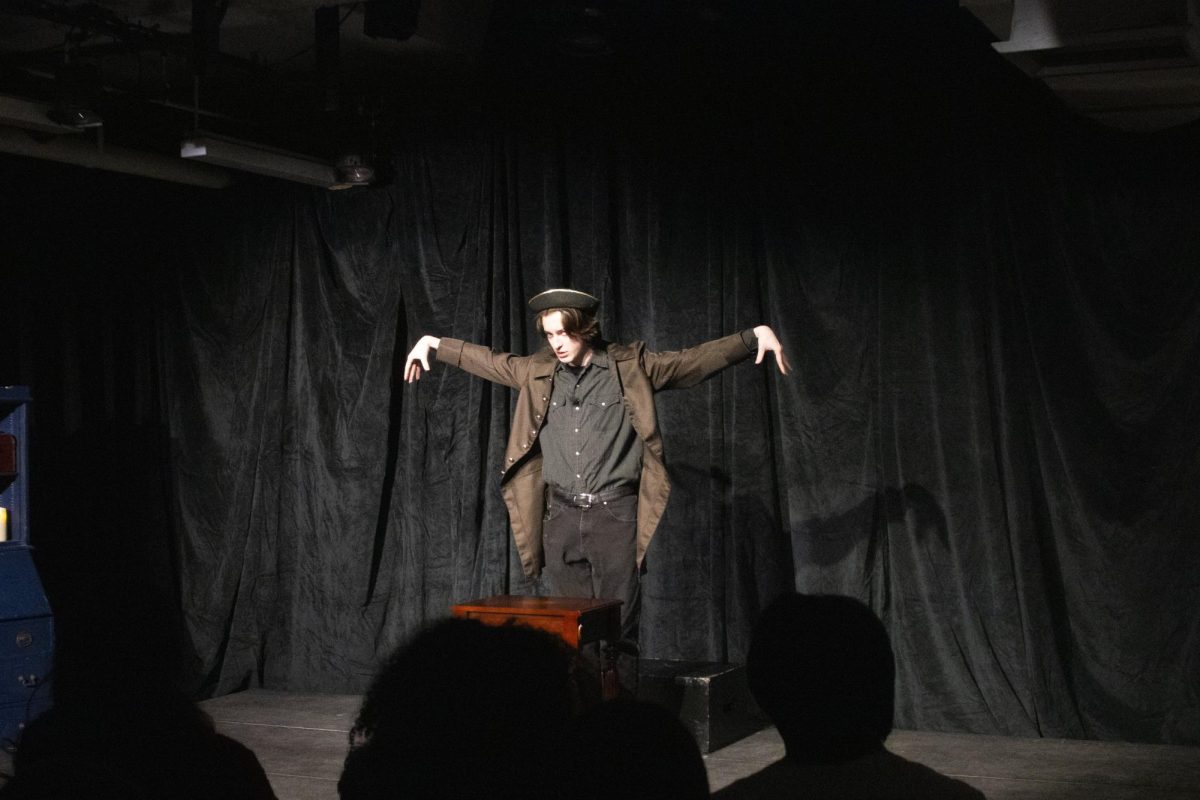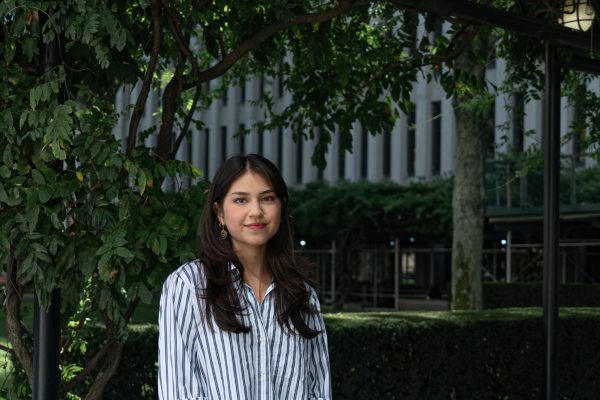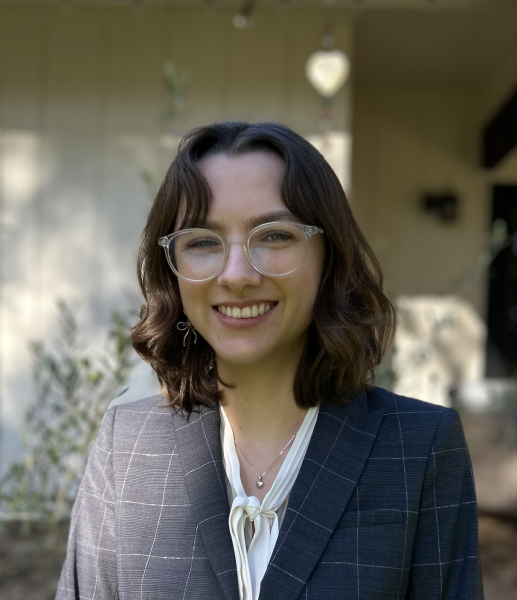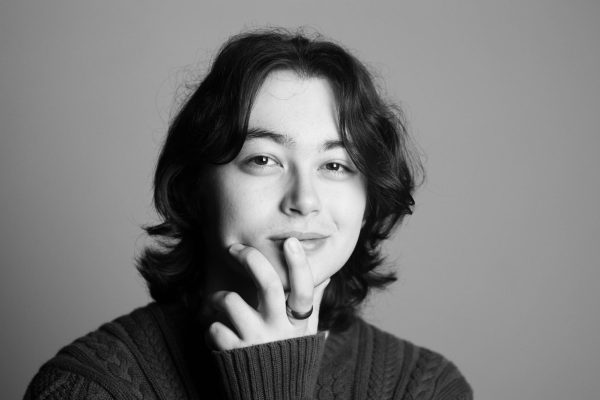“The Legend of Sleepy Hollow: A One-Actor Haunt,” written and directed by Andrew J. Defrin, Fordham College at Lincoln Center (FCLC) ’26, brought the thrills of the classic American short story to the White Box theater from Feb. 13 through Feb. 15. The play — an adaptation of Washington Irving’s original 1820 work — put a spin on the enduring tale by relying on the storytelling capabilities of one actor.
Alexander Goodrich, FCLC ’27, played the show’s singular role, a historian reenacting the tale of schoolteacher Ichabod Crane and his fabled encounter with the Headless Horseman. Goodrich landed a rich and lively performance, moving fluidly between characters in a way that clearly structured the narrative and hinted at the character’s increasing paranoia.
Goodrich, who is a theatre minor, utilized controlled posture in order to create those fluid character transitions. This allowed the audience to clearly tell when Goodrich was embodying each person — an essential element for a one-man show. Each character, from the confident Abraham “Brom Bones” Van Brunt (Crane’s rival) to Crane himself, was made distinct through Goodrich’s deft physicality.
He said that preparing for the role was more intense than anything he had ever done.
“I tried every method in memorizing this,” Goodrich said. “I was writing, I was doing flash cards, and then I was recording my voice and listening to it. I think that was definitely the one that helped (the most).”
The haunting atmosphere of Defrin’s production was further cemented through the lighting choices.
Adjacent to the stage were musicians Samuel Guzman-Almonte, FCLC ’27, and Elijah Warrington, FCLC ’26, whose live accompaniment set the atmosphere throughout the 50-minute production. Clear musical motifs, written by Warrington himself, brought the audience further into the dreary autumnal world of Irving’s story.
At various points in the play, the viewers were treated to engaging interactions between Goodrich and the musicians. In one particularly memorable moment, Guzman-Almonte joined the actor on stage to perform a diegetic violin piece during a party scene, earning a round of applause from the audience. In other moments the two musicians lent comedic flair to Goodrich’s heightened delivery.
The haunting atmosphere of Defrin’s production was further cemented through the lighting choices. As the tale unfolded, warm hues and bright colors illuminated pastoral scenes, while the absence of light imbued every forest scene with suspense. Defrin said that the use of total darkness was intentional.
“I think there’s a ritualistic nature to a monologue, and I think darkness is your best friend in the theater, and we totally embraced that,” Defrin said. “There’s a lot of moments of just full darkness, and as a storyteller is telling a story and those shadows of history are creeping up on him, we start to understand why he’s telling the story.”
Defrin incorporated other creative elements like the sound of clattering objects, shadow figures and the trembling beam of a flashlight to spook the audience. The effect was amplified by Goodrich’s palpable unease, as he narrated in the low voice of a storyteller by a campfire.
By the production’s end, Goodrich portrayed multiple characters, performed an entire musical act and embodied Crane in his mysterious last moments. His character seems afflicted by the unresolved nature of the legend, and shows signs that he himself has been haunted through keeping the tale alive. Viewers come away rattled by the thought that they too are implicated in the spine-chilling legacy of Sleepy Hollow.
Throughout its 50-minute runtime, “The Legend of Sleepy Hollow: A One-Actor Haunt” brought together unique lighting, enchanting original music and an inventive performance from lone actor Goodrich in order to bring Irving’s timeless story to life.




